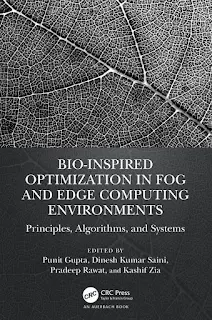English for Writing Research Papers 3rd Edition
Adrian Wallwork ... 537 pages - Language: English - Publisher: Springer; 3rd edition (March, 2023) - ISBN: 978-3031310713 and 978-3031310720.
Publishing your research in an international journal is key to your success in academia. This guide is based on a study of over 1000 manuscripts and reviewers' reports revealing why papers written by non-native researchers are often rejected due to problems with English usage and poor structure and content.
With easy-to-follow rules and tips, and examples taken from published and unpublished papers, you will learn how to: prepare and structure a manuscript + increase readability and reduce the number of mistakes you make in English by writing concisely, with no redundancy and no ambiguity + write a title and an abstract that will attract attention and be read + decide what to include in the various parts of the paper (Introduction, Methodology, Discussion etc) + highlight your claims and contribution + avoid plagiarism + discuss the limitations of your research + choose the correct tenses and style + satisfy the requirements of editors and reviewers.
This new edition contains over 40% new material, including two new chapters, stimulating factoids, and discussion points both for self-study and in-class use. This edition has two completely new chapters covering machine translation and using AI tools (e.g. chatbots, paraphrasers, editing tools) to improve and correct the English of a text.
Publishing your research in an international journal is key to your success in academia. This guide is based on a study of over 1000 manuscripts and reviewers' reports revealing why papers written by non-native researchers are often rejected due to problems with English usage and poor structure and content.
With easy-to-follow rules and tips, and examples taken from published and unpublished papers, you will learn how to: prepare and structure a manuscript + increase readability and reduce the number of mistakes you make in English by writing concisely, with no redundancy and no ambiguity + write a title and an abstract that will attract attention and be read + decide what to include in the various parts of the paper (Introduction, Methodology, Discussion etc) + highlight your claims and contribution + avoid plagiarism + discuss the limitations of your research + choose the correct tenses and style + satisfy the requirements of editors and reviewers.
This new edition contains over 40% new material, including two new chapters, stimulating factoids, and discussion points both for self-study and in-class use. This edition has two completely new chapters covering machine translation and using AI tools (e.g. chatbots, paraphrasers, editing tools) to improve and correct the English of a text.



















